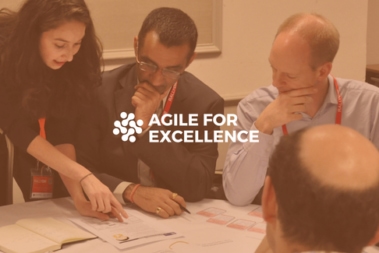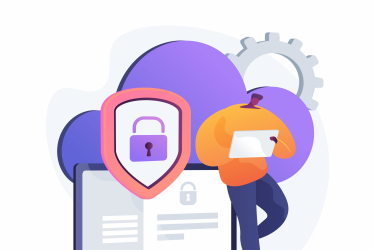Insights, Projects
Government Innovation Series: Establishing Design Thinking through Workshops
What does it take to bring innovation practices into Government contexts? The Centre facilitated a 2.5 day workshop on design thinking and the Innovation Toolkit with UBR employees.
Government Innovation Series
Alongside UBR, the Centre for Innovation is working on a number of initiatives to encourage government innovation. From the outcomes of the collaboration so far, we have developed an extensive toolkit for organisations to use to innovate. The toolkit prepares organisations to respond to societal developments through innovation and is packed full of tools, guides, and methods to encourage such processes. The contents of the toolkit can support organisations from problem identification to identifying a plausible solution. It has multiple tools for each step in the process: (1) to analyse problems and contexts; (2) generate ideas; (3) validate solutions. Moreover, the toolkit also offers comprehensive plans for suggested workshops to facilitate implementation of the tools.
Go to the Innovation Toolkit (opens in a new tab).
In the Government Innovation Series, the Centre for Innovation will focus on highlights from the project. This article zooms in on using workshops to train government employees in design thinking. Interested in finding out more about government innovation? Read our article on design thinking or another article on adapting innovation canvases for the public sector.
The workshop was designed on two main learning principles: experiential learning and working with real cases.
Experiential Learning
Design thinking and experiential learning work together hand-in-hand. Both hold learning from trial and error as a key principle. In the workshop, the learners alternated between the roles of learner and facilitator. An important part of experiential learning is reflecting on your experience. In design thinking, this reflection might cause for new iterations of the problem or solution—the same goes for facilitating skills.
Real cases
The second principle was working with real cases. Learners were asked to provide a current problem relevant to their organisation and ask the management what would happen if this problem is not fixed? The answer provided offered insight into the urgency involved and identified the end-user experiencing the problem. Working with real cases and involving management ensures the transfer of knowledge from the workshop context to the workplace.
The Programme
The programme was structured as follows. Starting with a kick-off we explored the different phases of our design thinking framework taking a half day to cover each phase. In the figure below the main tools used for each phase are listed.

The Kick-off Phase
To prepare the workshop participants for the programme, we guided them through a rapid design hour-long process using the case “How can I show up to work happy?”. This not only engaged their creative abilities, but the rapid design session prepared them to interact with the principles of divergent and convergent thinking, timeboxing, and thinking from an end-user perspective. As facilitators, it gives us the opportunity to get to know the learners, set goals, and establish the ground rules for working together.


The Understand Phase
After selecting the cases and dividing the group into teams of four or five, the design sprint can get started. In the understand phase, learners are forced to confront the problem. When problem cases are presented, it is inevitable that some participants can’t resist suggesting solutions. “I would just do…” or “can’t you just…” are sentences to watch out for and provide a good opportunity to comment on the human reflex to start solving without a clear understanding of the problem at hand. Tools to use during this phase are creating a persona, going through a customer journey, and conducting 5x Why interviews. At the end of this phase, all teams have a “how might we question” that is human-centred and balances between the too-specific and too-broad.


The Ideas Phase
From the “how might we question”, it is finally time to get creative and brainstorm as many ideas as possible. In this phase, the divergent and convergent principles are very important. When working in a government or other complex organisational context, it is important to start with divergent thinking. In a complex context, the reflex is often to immediately list the constraints of a possible solution. In this phase, it is important to put creativity before reality, and to put quantity over quality. A tool that encourages this approach is the ‘Crazy 8s’ (see text box below) where everyone is asked to draw eight different solutions to the “how might we” question. Getting the obvious answers out of the way in the first three solutions, learners often surprise themselves with the crazy ideas they come up with afterwards.
When deciding on which idea to prototype first, ideas need to be checked for viability, feasibility, and desirability. One way to do this is to use the Now How Wow Matrix. This involves plotting ideas into axes of originality and difficulty to implement. Through this you can find the “WOW” sweet spot between innovation and ease of implementation. In this phase, it is important to keep in mind that the idea is a solution to the problem formulated in the how might we question. It is easy to fall in love with your idea and forget about the problem you are trying to solve.


The Prototype Phase
The next phase moved onto involves prototyping and concept development. In most cases, it was not possible to create a testable prototype because of time constraints. After selecting that “WOW” idea, the concept was developed by using creative methods such as drawing a storyboard—acting out a new service or creating a mock up for the proposed functionalities of a website. In the development of the concept, it becomes clear if the idea is still missing something, how the organisational context can be taken into account, and what assumptions still need to be tested.


The Validate Phase
During the workshop learners wrote down their assumptions about the end-users, problem, and solutions after working with each tool. By now, learners are eager to test their riskiest assumptions. Through using the mom test, learners interview the end-users to check if their idea works. After the interviews, it becomes clear if they have to go back to the drawing board and iterate either on their “how might we” question or their solution. Checking their assumptions is always one of the pinnacle moments during the workshops, as most people are a little hesitant to ask for feedback at first. However in doing this, the value of design thinking becomes more clear to them.
On the final day, management and other relevant stakeholders are invited to join the workshop to participate when the groups present their solution. Management then plays a vital role in connecting the groups to the right people within the organisation to make their ideas come to live. Just creating a toolkit and organising workshop innovation is not guaranteed, the idea must gain support from management to be successfully implemented.


The ‘Crazy 8s’ Exercise
Want to try the ‘Crazy 8s’ method yourself? In 15 minutes each participant will generate 8 unique ideas for your problem. We have found that it’s best to do this in groups ranging between 3 to 6 people. Use a ‘how might we’ question or problem statement as a starting point for this exercise.
How it works
Step 1: Explain that the learners are going to draw solutions to the problem at hand. The learners will have one minute to draw their solution to the ‘how might we’ question. After one minute they must pass the paper to the person next to their right and also receive the drawing of their neighbour to the left (this can serve as inspiration for their next solution). Again they will get 1 minute to draw a new solution in the second square.
Step 2: Distribute paper and ask each participant to fold a piece of paper into eight squares. By the end of the exercise each square will contain an idea.
Get started:
Step 3: Start the timer and make sure that everyone sticks to the one-minute limit.
Step 4: when you see people are running out of ideas (looking around, not drawing) you can help them by through prompts before the next drawing round. Prompts could include:
- “Now draw the solution a 4 year old would come up with”
- “How would Donald Trump solve this problem?”
- “How would you solve this if you had only 24 hours”
These prompts help learners to think outside of the box and come up with new ideas.
Wrapping up
After eight rounds of drawing people are eager to share their ideas. Ask the groups to share their ideas and write them down on post-its. This helps to cluster them for the next part of the ideation.
References
Tschimmel, K. (2012). Design Thinking as an effective Toolkit for Innovation. In: Proceedings of the XXIII ISPIM Conference: Action for Innovation: Innovating from Experience. Barcelona. ISBN 978-952-265-243-0.
Get in touch with the author

Daniek Bosch
Learning Experience Design
d.bosch@sea.leidenuniv.nl







